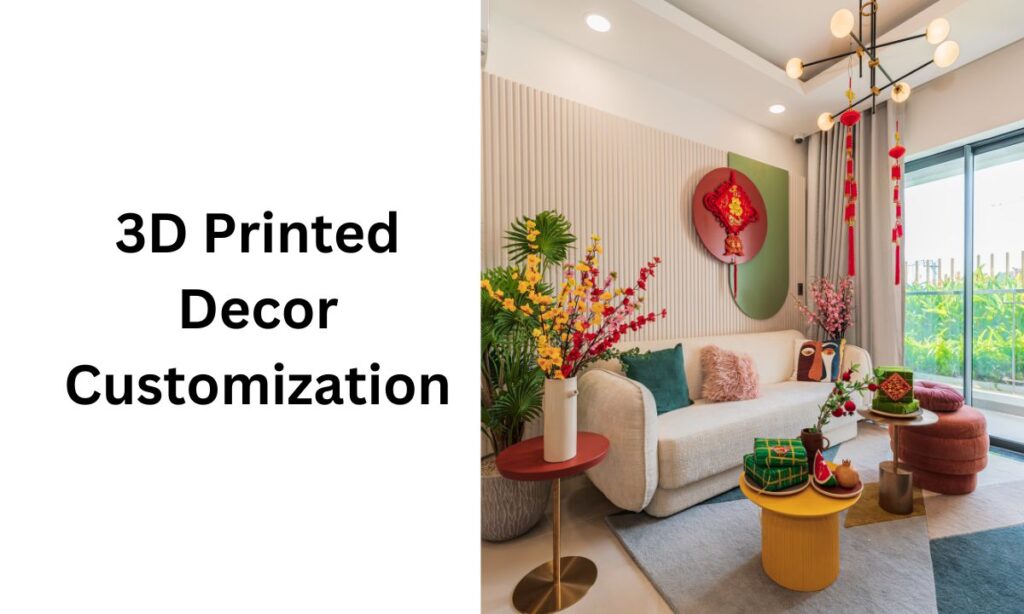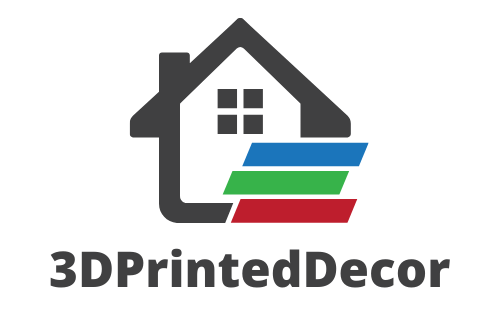
In recent years, 3D printing has transformed the way we think about home decor. Gone are the days when you had to rely solely on store-bought items that may not reflect your personal style or fit your space perfectly. Now, with a little creativity and some basic knowledge, you can design your own unique decor pieces right from the comfort of your home. However, many people have concerns about the complexity of designing for 3D printing. “Isn’t it too technical?” you might wonder. Well, let’s put those worries to rest!
Designing your own 3D printed decor is not only achievable but also incredibly rewarding. With the right guidance and tools, anyone can create beautiful and functional pieces that enhance their living spaces. Let’s dive into how you can get started on this exciting journey!
How Can I Start Designing My Own 3D Printed Decor?
You may be asking yourself, “What do I need to know before I start designing my own decor?” This is a common question for beginners, and it’s completely understandable to feel overwhelmed by the possibilities. The good news is that designing for 3D printing can be straightforward and enjoyable.
You Don’t Need to Be a Pro
It’s important to reassure you that you don’t need to be a professional designer or engineer to create stunning 3D printed decor. While some technical knowledge can be helpful, many user-friendly design software options are available that cater to beginners. With practice and patience, you’ll find that designing your own pieces can be a fun and fulfilling experience.
Understanding 3D Printing Basics
At its core, 3D printing is an additive manufacturing process that builds objects layer by layer from a digital model. This means that instead of cutting away material (as in traditional manufacturing), 3D printing adds material where it’s needed. This approach not only reduces waste but also allows for intricate designs that would be difficult to achieve through conventional methods.Most commonly used materials in 3D printing include PLA (polylactic acid) and PETG (polyethylene terephthalate glycol). These materials are not only durable but also environmentally friendly options for creating decor items.
Practical Tips for Designing Your Own Decor

If you’re ready to jump into designing your own 3D printed decor, here are some practical tips to help you get started:
- Choose the Right Software: Start with beginner-friendly design software like Tinkercad or Fusion 360. These platforms offer intuitive interfaces that make it easy to create and modify designs.
- Understand Your Printer’s Capabilities: Familiarize yourself with the specifications of your 3D printer, including build volume and material compatibility. This knowledge will help you design pieces that fit within your printer’s limitations.
- Consider Material Properties: Different materials have different strengths and weaknesses. For example, PLA is great for decorative items but may not be suitable for functional parts exposed to heat or moisture.
- Test Your Designs: Before committing to a final print, consider creating smaller test versions of your designs. This allows you to check for fit and functionality without wasting too much material.
- Seek Inspiration: Browse online galleries or social media platforms like Pinterest and Instagram for design ideas. Seeing what others have created can spark your creativity!
Acknowledging Your Concerns
It’s completely normal to feel apprehensive about starting something new, especially when it involves technology like 3D printing. Many beginners worry about making mistakes or producing subpar results. Remember, every expert was once a beginner! Embrace the learning process, and don’t hesitate to experiment with different designs and techniques.
The Benefits of Designing Your Own Decor
- Customization: One of the most significant advantages of designing your own decor is the ability to create pieces tailored specifically to your tastes and preferences.
- Cost-Effectiveness: While there may be initial costs associated with purchasing a printer or materials, creating your own decor can save money in the long run compared to buying high-end items.
- Sustainability: By using eco-friendly materials and minimizing waste through precise design, you can contribute positively to environmental sustainability.
The Future of DIY Decor Through 3D Printing
As technology continues to evolve, new tools are emerging that make designing for 3D printing even more accessible.
Point 1: Advanced Design Software
Recent advancements in design software have made it easier than ever for beginners to create complex models without extensive training. Programs now offer features like drag-and-drop functionality, pre-made templates, and tutorials that guide users through the design process step by step.
Point 2: Community Resources
Online communities dedicated to 3D printing are thriving! Platforms such as Reddit and various forums provide spaces where users can share their designs, seek advice, and learn from one another’s experiences. Engaging with these communities can enhance your skills and inspire new ideas.
Further Information: Exploring Related Topics
As you embark on your journey into designing 3D printed decor, consider exploring related topics such as:
- The impact of 3D printing on traditional crafts.
- How interior designers are integrating custom 3D printed elements into their projects.
- The role of sustainability in modern design practices.
Conclusion
In conclusion, designing your own 3D printed decor is an exciting opportunity that allows you to express your creativity while enjoying the benefits of customization and sustainability! It’s natural to have concerns about diving into this new technology; however, with the right tools and resources at your disposal, you can confidently navigate this creative endeavor.
Remember that every successful designer started somewhere—embrace the learning process! Don’t hesitate to consult with professionals or engage with community resources for personalized advice as you explore this innovative realm of home decor.
Frequently Asked Questions (FAQs)
What materials can be used for 3D printed decor?
Most commonly, plastics like PLA or ABS are used. However, with advanced printers, materials like metal, ceramic, and even wood can be used.
How long does it take to print a decor item?
The time can vary based on the size and complexity of the design. A small item like a vase might take a few hours, while a larger piece like a lampshade could take over a day.
Is 3D printed decor durable?
Yes, with the right materials and proper design, 3D printed items can be as durable as traditionally manufactured ones.
What software should I use for designing my own decor?
Beginner-friendly options like Tinkercad or Fusion 360 are great starting points for creating custom designs.
Where can I find inspiration for my designs?
Online platforms like Pinterest, Thingiverse, and Instagram are excellent sources of inspiration where you can see what others have created.
